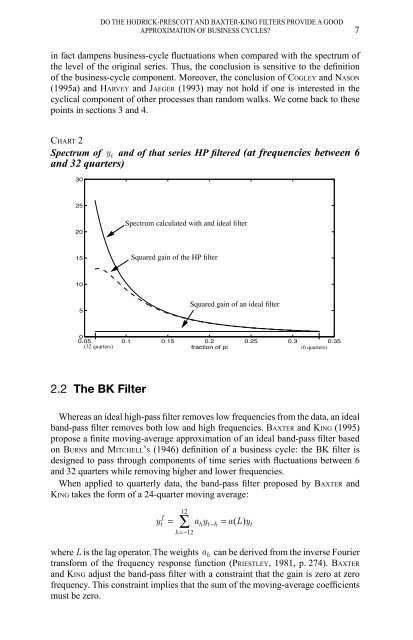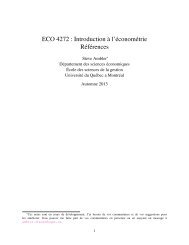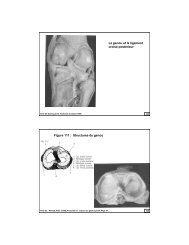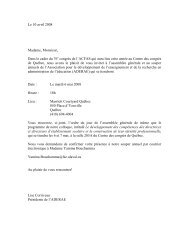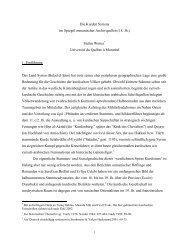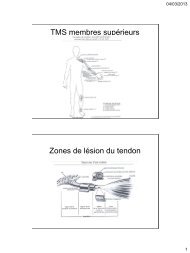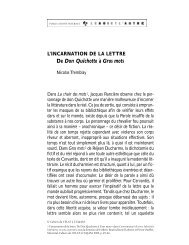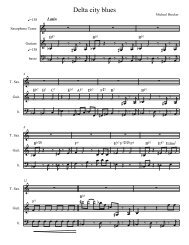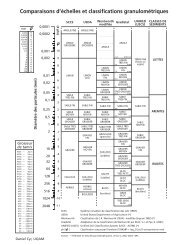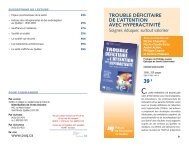Do the Hodrick-Prescott and Baxter-King Filters Provide a ... - UQAM
Do the Hodrick-Prescott and Baxter-King Filters Provide a ... - UQAM
Do the Hodrick-Prescott and Baxter-King Filters Provide a ... - UQAM
Create successful ePaper yourself
Turn your PDF publications into a flip-book with our unique Google optimized e-Paper software.
DO THE HODRICK-PRESCOTT AND BAXTER-KING FILTERS PROVIDE A GOOD<br />
APPROXIMATION OF BUSINESS CYCLES? 7<br />
in fact dampens business-cycle fluctuations when compared with <strong>the</strong> spectrum of<br />
<strong>the</strong> level of <strong>the</strong> original series. Thus, <strong>the</strong> conclusion is sensitive to <strong>the</strong> definition<br />
of <strong>the</strong> business-cycle component. Moreover, <strong>the</strong> conclusion of COGLEY <strong>and</strong> NASON<br />
(1995a) <strong>and</strong> HARVEY <strong>and</strong> JAEGER (1993) may not hold if one is interested in <strong>the</strong><br />
cyclical component of o<strong>the</strong>r processes than r<strong>and</strong>om walks. We come back to <strong>the</strong>se<br />
points in sections 3 <strong>and</strong> 4.<br />
CHART 2<br />
Spectrum of y t <strong>and</strong> of that series HP filtered (at frequencies between 6<br />
<strong>and</strong> 32 quarters)<br />
30<br />
25<br />
20<br />
Spectrum calculated with <strong>and</strong> ideal filter<br />
15<br />
Squared gain of <strong>the</strong> HP filter<br />
10<br />
5<br />
Squared gain of an ideal filter<br />
0<br />
0.05 0.1 0.15 0.2 0.25 0.3 0.35<br />
(32 quarters) fraction of pi<br />
(6 quarters)<br />
2.2 The BK Filter<br />
Whereas an ideal high-pass filter removes low frequencies from <strong>the</strong> data, an ideal<br />
b<strong>and</strong>-pass filter removes both low <strong>and</strong> high frequencies. BAXTER <strong>and</strong> KING (1995)<br />
propose a finite moving-average approximation of an ideal b<strong>and</strong>-pass filter based<br />
on BURNS <strong>and</strong> MITCHELL’S (1946) definition of a business cycle: <strong>the</strong> BK filter is<br />
designed to pass through components of time series with fluctuations between 6<br />
<strong>and</strong> 32 quarters while removing higher <strong>and</strong> lower frequencies.<br />
When applied to quarterly data, <strong>the</strong> b<strong>and</strong>-pass filter proposed by BAXTER <strong>and</strong><br />
KING takes <strong>the</strong> form of a 24-quarter moving average:<br />
12<br />
f<br />
t = ∑ h t −h = ( ) t<br />
h =−12<br />
y a y a L y<br />
where L is <strong>the</strong> lag operator. The weights h a can be derived from <strong>the</strong> inverse Fourier<br />
transform of <strong>the</strong> frequency response function (PRIESTLEY, 1981, p. 274). BAXTER<br />
<strong>and</strong> KING adjust <strong>the</strong> b<strong>and</strong>-pass filter with a constraint that <strong>the</strong> gain is zero at zero<br />
frequency. This constraint implies that <strong>the</strong> sum of <strong>the</strong> moving-average coefficients<br />
must be zero.


